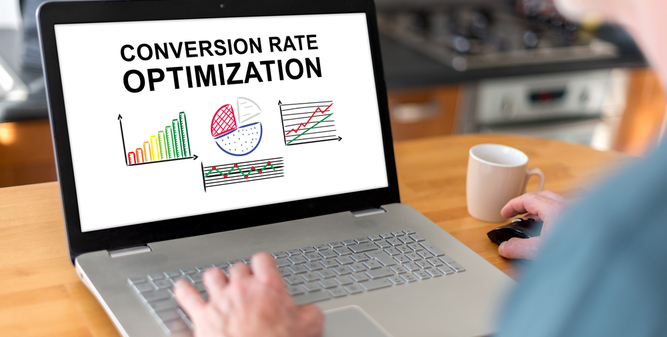 Reading Time: 3 minutes
Reading Time: 3 minutesYou need to acquire clients, increase sales, and spread brand awareness to keep growing your business.
To do so, you’ll need to get your product or services in front of as many potential clients as possible—but drawing users to your website is only the beginning of the battle. Once they’re there, the real task of transforming them from marginally interested prospect to customer is underway.
Claim Your Free Site Consultation
Whether you want site visitors to fill out a contact form, make a purchase, or take some other action to further engage with your business, what you’re seeking are conversions.
These conversions—more aptly defined as instances when website visitors complete one of your desired goals—are the ultimate indicator of your business’s success. The rate at which they occur, compared to the number of overall visitors to your page, is known as your conversion rate.
A high conversion rate corresponds to many of your website visitors completing your desired action after landing on your site; a low conversion rate means your efforts to convert prospects into customers aren’t very successful. You want your conversion rates as high as possible—but how can you achieve this? For most, this means implementing an effective conversion rate optimization campaign.
What Is Conversion Rate Optimization?
Conversion rate optimization, or CRO, is your combined efforts to analyze user behavior and utilize that knowledge to improve your website and user experience to increase the likelihood of user conversions. Driving traffic to your website and implementing CRO to make better use of the traffic you already receive comprises both halves of your marketing toolkit. In other words, after you’ve brought people to your website, CRO helps you make the improvements that lead them to become customers.
At its most basic level, a CRO campaign involves making an effort to understand the way your website operates and the process users must go through to make a conversion. This evaluation can help you identify areas of your website that need attention. The resulting insights into your users’ behavior can help you improve your user experience (UX) to assist users through the conversion process in a more efficient manner.
How Does Conversion Rate Optimization Work?
Primarily, CRO is a continuous process of evaluation, changes, testing, and more evaluation. CRO never stops—you should always be endeavoring to learn from your mistakes, analyze conversion efforts, and using the resulting insights to continue optimization. However, to make efficient use of a CRO campaign, it should consist of several steps:
Research
Before you attempt to make improvements, you need to develop an informed position regarding what needs to change. This position is the point at which many page owners simply look at the changes implemented by the competition. However, a real CRO campaign utilizes quantitative research to learn about what users are doing on a page, qualitative research to determine why a target audience behaves the way it does, and analysis of how the two mesh to isolate page elements that may need to change.
Hypothesizing
Once you’ve identified an area of your website that your research has led you to change, you’ll need to develop a hypothesis to address it. First, state the change you want to make based on your research; then, state a goal you want to achieve with the change. Finally, connect the two with the reasoning why you think the changes will lead you to your goal.
Prioritizing
When you have a hypothesis built to take you toward your goals, you’ll need to decide on which parts of your website to begin. Many people begin with the pages that perform worst, while others choose to start with those that bring in the most valuable traffic. Still, others begin with the pages that respond the best to optimization; whatever your strategy, this is the stage where you determine what to optimize first.
Testing
Now, you’re ready to test your hypothesis on the page you’ve chosen. Test types include:
-
- A/B testing, where you change a single variant and compare your website’s new performance to your original data.
- Split testing, where you keep your website’s original interface on one URL, and implement your change on a split URL to compare the two in real-time.
- Multivariate testing, where you want to make multiple changes and test numerous combinations of two or more variants together to see which works best.
Analysis
Here’s where you learn from the tests you’ve just run. If your hypothesis was incorrect and your changes did not return positive results, you’ll need to study the resulting data, find relevant insights, and test again using a new strategy. If your hypothesis was correct, you’ll need to determine whether deploying your changes on a broader level will be worth the expense necessary to make them.
CRO Insights
As an ongoing process, your CRO efforts continue as you learn and optimize all elements of your page, including your web copy, content, calls to action, lead gen forms, and more. Through CRO, you’ll learn valuable information about your potential clients and make the changes necessary to convert more of them into customers. With attention to CRO, your increased conversions will drive your business forward to meet your goals.
Ready for more? Vizion Interactive’s CRO services help you direct more users into your business funnel and analyze how to get them to convert. Contact us for more information regarding the how.
At Vizion Interactive, we have the expertise, experience, and enthusiasm to get results and keep clients happy! Learn more about how our CRO services can increase sales and boost your ROI. But don’t just take our word for it, check out what our clients have to say, along with our case studies.




